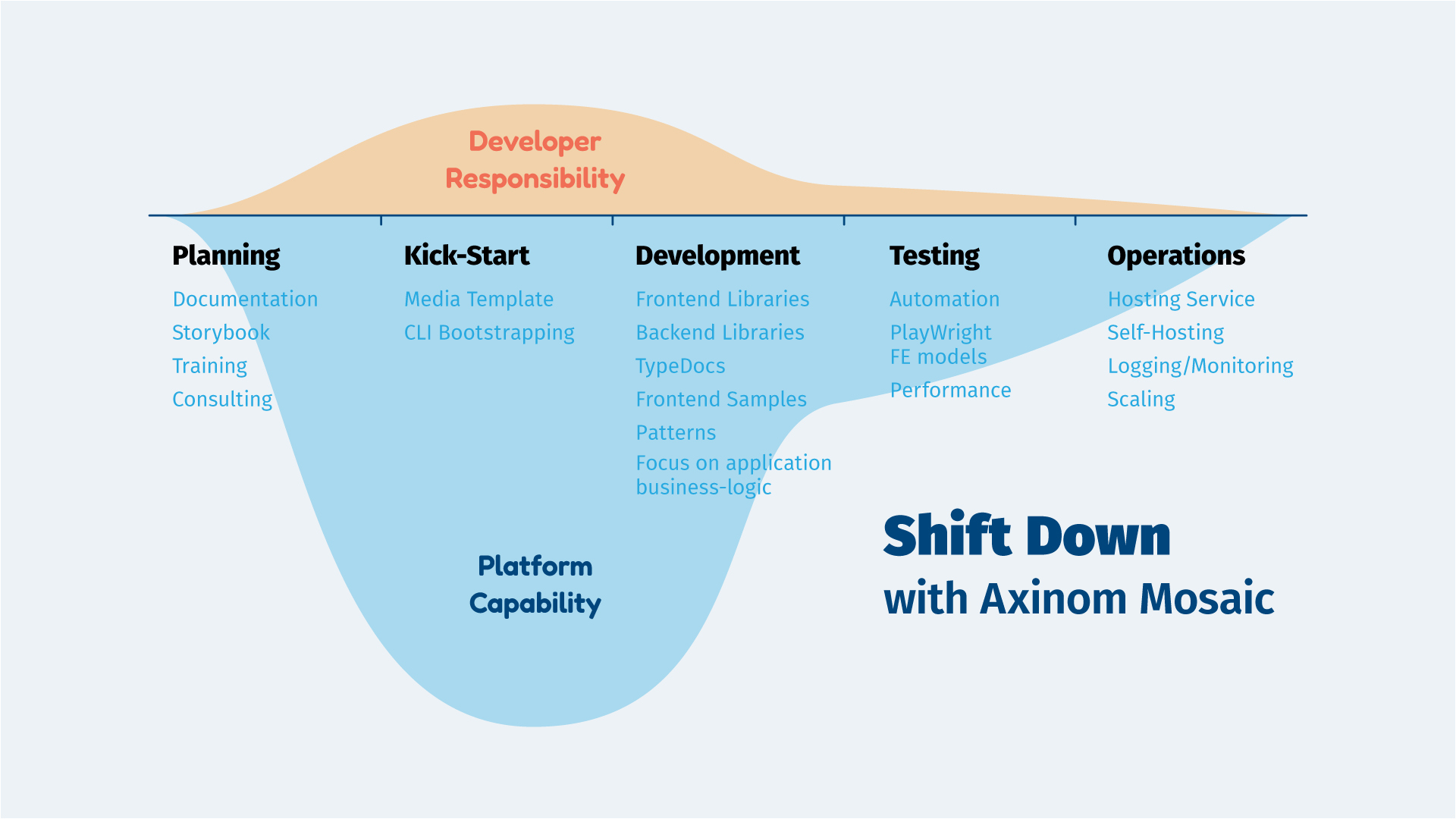This site is is currently under maintenance, please try again later
Mosaic, a microservice-platform, implements composable architecture by putting emphasize on independent, interchangeable components. Mosaic services can be offered as managed or customizable. They can represent the management or frontend-facing side.
Don’t have time?
Book a call

TRUSTED BY






A lot of typical development activities are “shifted down” using Mosaic Platform, so that developers can concentrate on the business-logic of their applications.

A lot of typical development activity is “shifted down” using Mosaic Platform
MACH is an architectural approach that stands for Microservices, API-first, Cloud-native, and Headless. Axinom Mosaic follows these principles, because this architecture provides flexibility for rapid scaling, seamless integration, and device-agnostic content delivery—all critical for modern digital and media-centric businesses.
Axinom Mosaic is built as a modular suite of services, each handling specific functions like content management, encoding, protection, and entitlement. Each microservice operates independently, enabling teams to develop, deploy, and scale each service independently based on demand.
The API-first principle is core to Axinom Mosaic, meaning that all functionalities are available as APIs that can be consumed by different applications, devices, or platforms.
Axinom Mosaic is a cloud-native platform, which means it is optimized to leverage cloud environments for deployment, scalability, and resilience.
Axinom Mosaic follows a headless architecture, separating the backend (content and data management) from the frontend (user interface).
We distinguish three service types according to their nature:

Examples: DRM, Video, Encoding

Examples: Medi, Catalog, Entitlement

Based on their placement in the value-delivery chain we distinguish:

Examples: Media Service, Monetization Service

Examples: Catalog Service, User Service

Management and Frontend-facing services
Axinom Mosaic is extremely flexible regarding the data structures. Out-of-the-box, Mosaic supports a few data types, such as Movie, TV Show, Collection including typical properties.
Definitions of these types reside in the customizable services (such as Media Service and Catalog Service), provided as open-source. Customers and integrators can use regular development tools to adjust the data types, instead of using specially created tools/languages/configurators.
We follow a database-schema-driven approach. Once the database schema is defined, we use Postgraphile to derive a GraphQL interface. Generated code can be further customized. Microfrontends on the Management System side can use GraphQL Codegen or other tools to generated strongly typed TypeScript proxies for calling GraphQL APIs. This makes a development process very fast and efficient.
Don’t have time now?
Book
a call